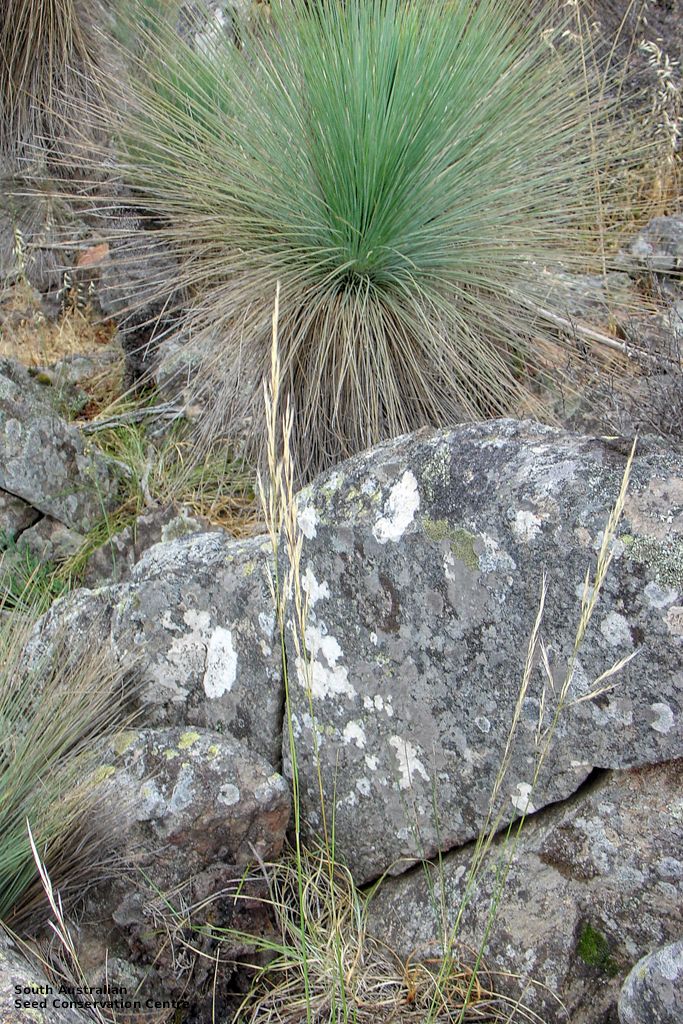
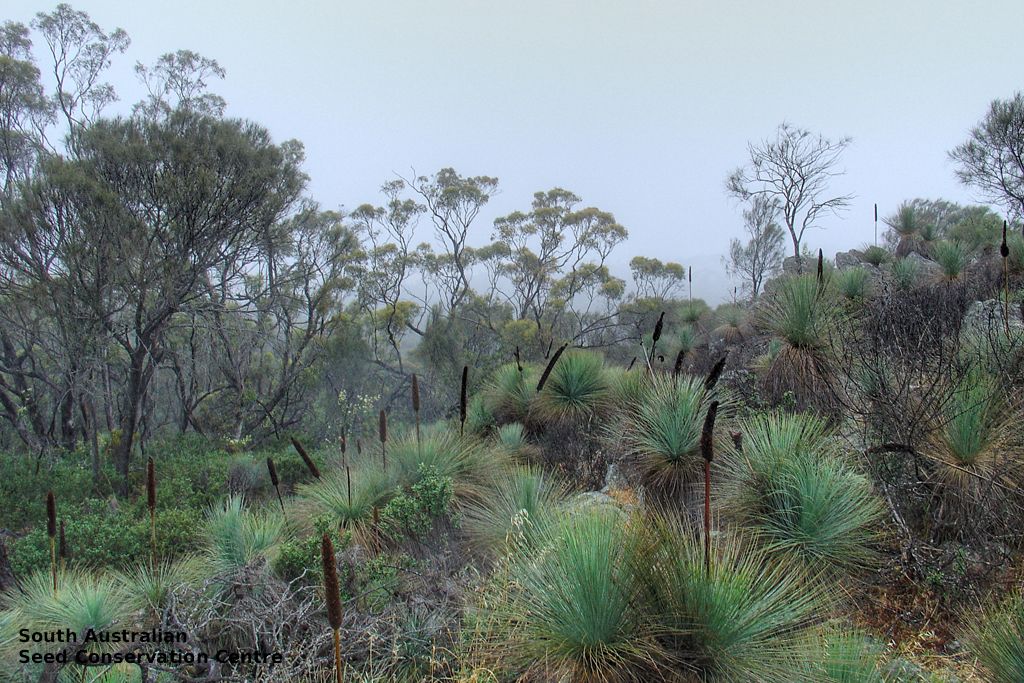
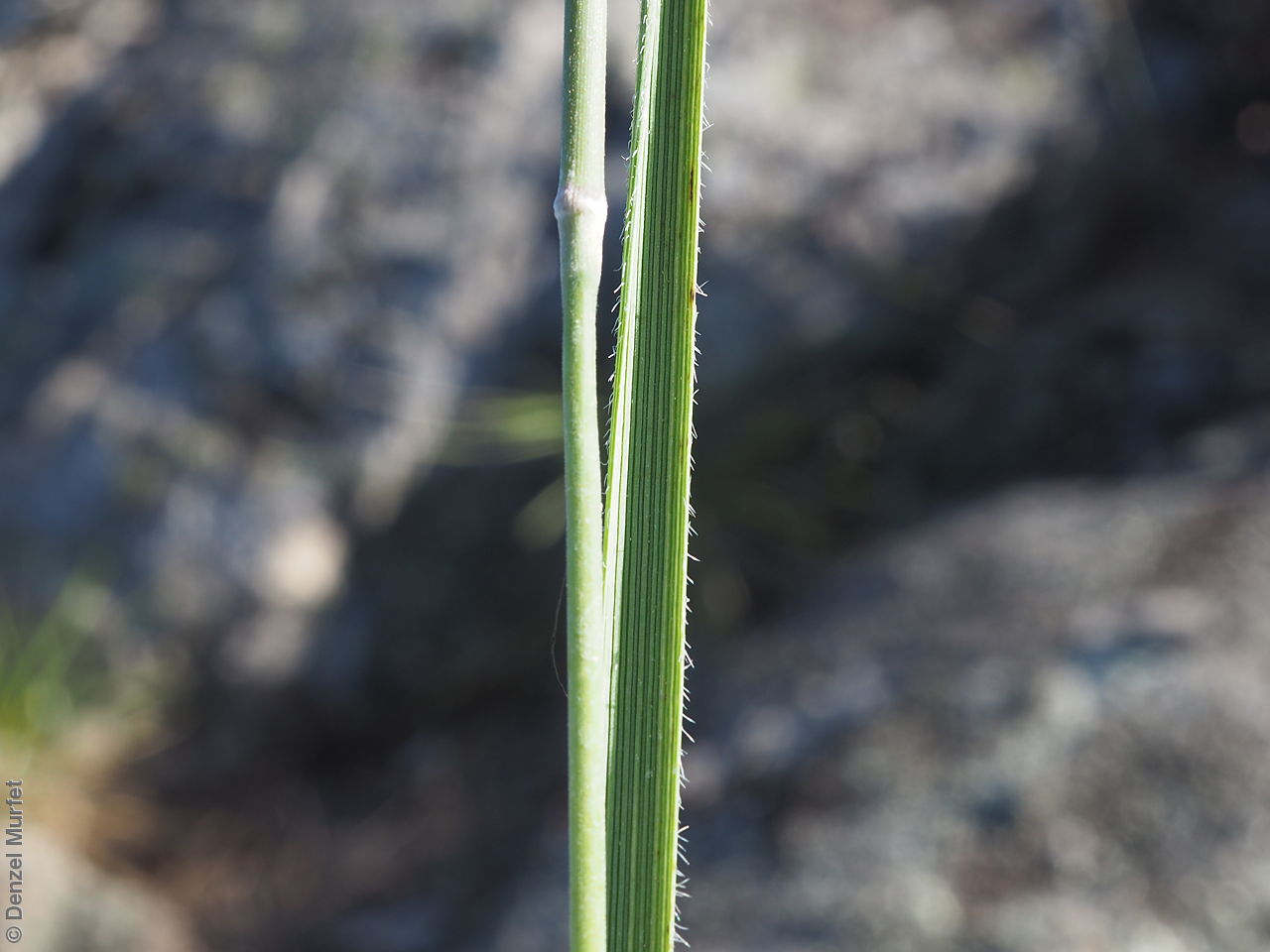

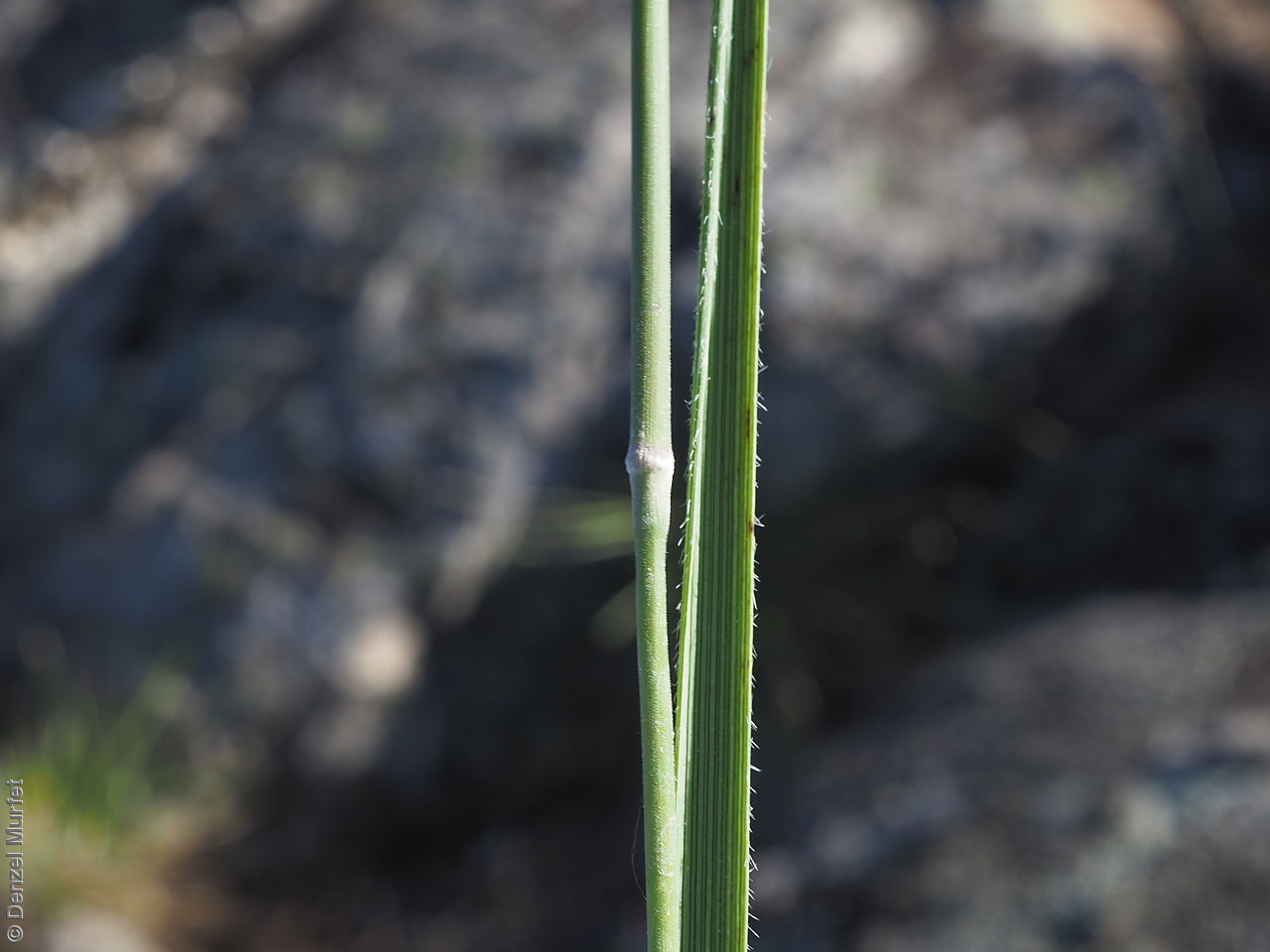
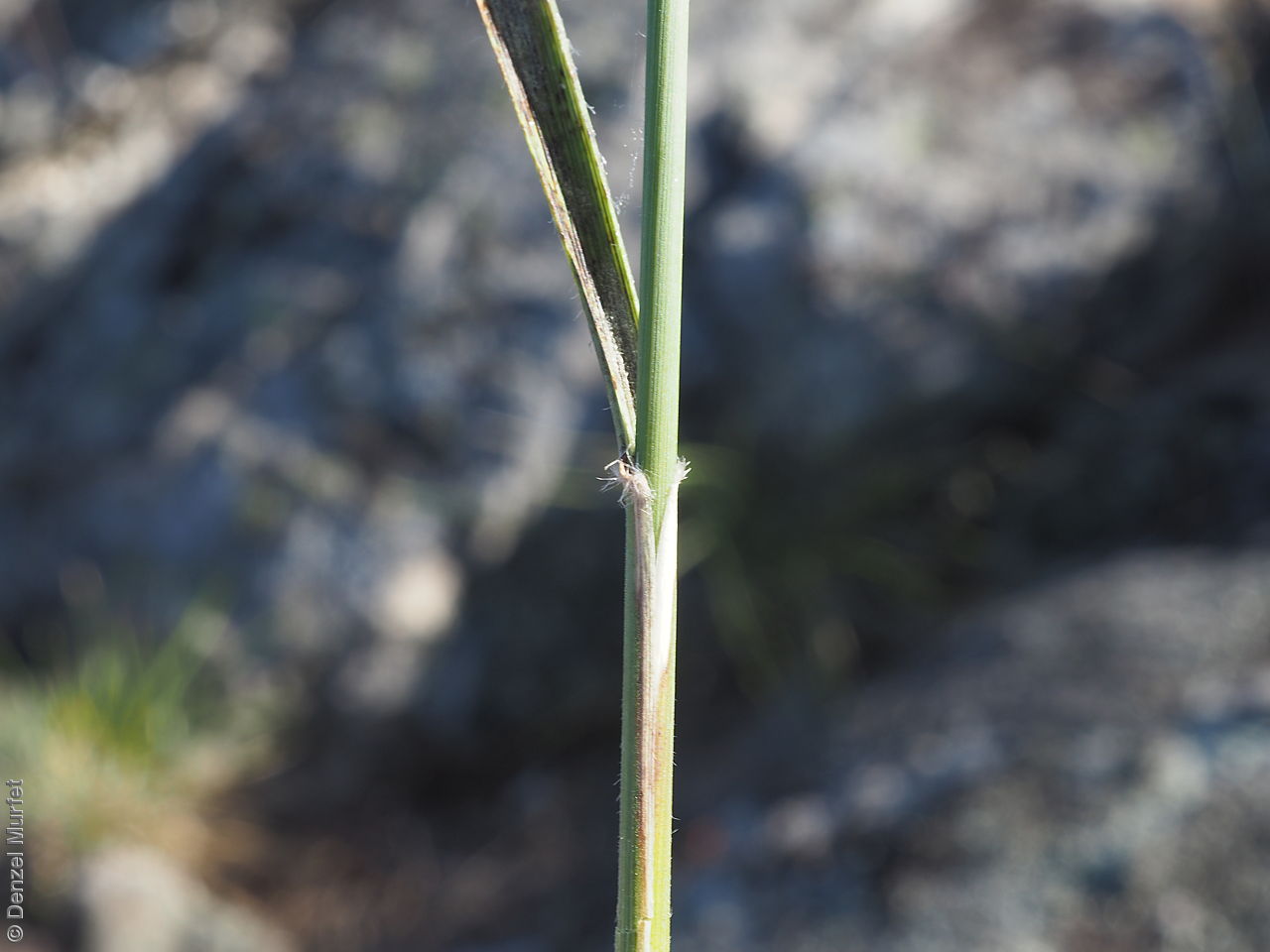
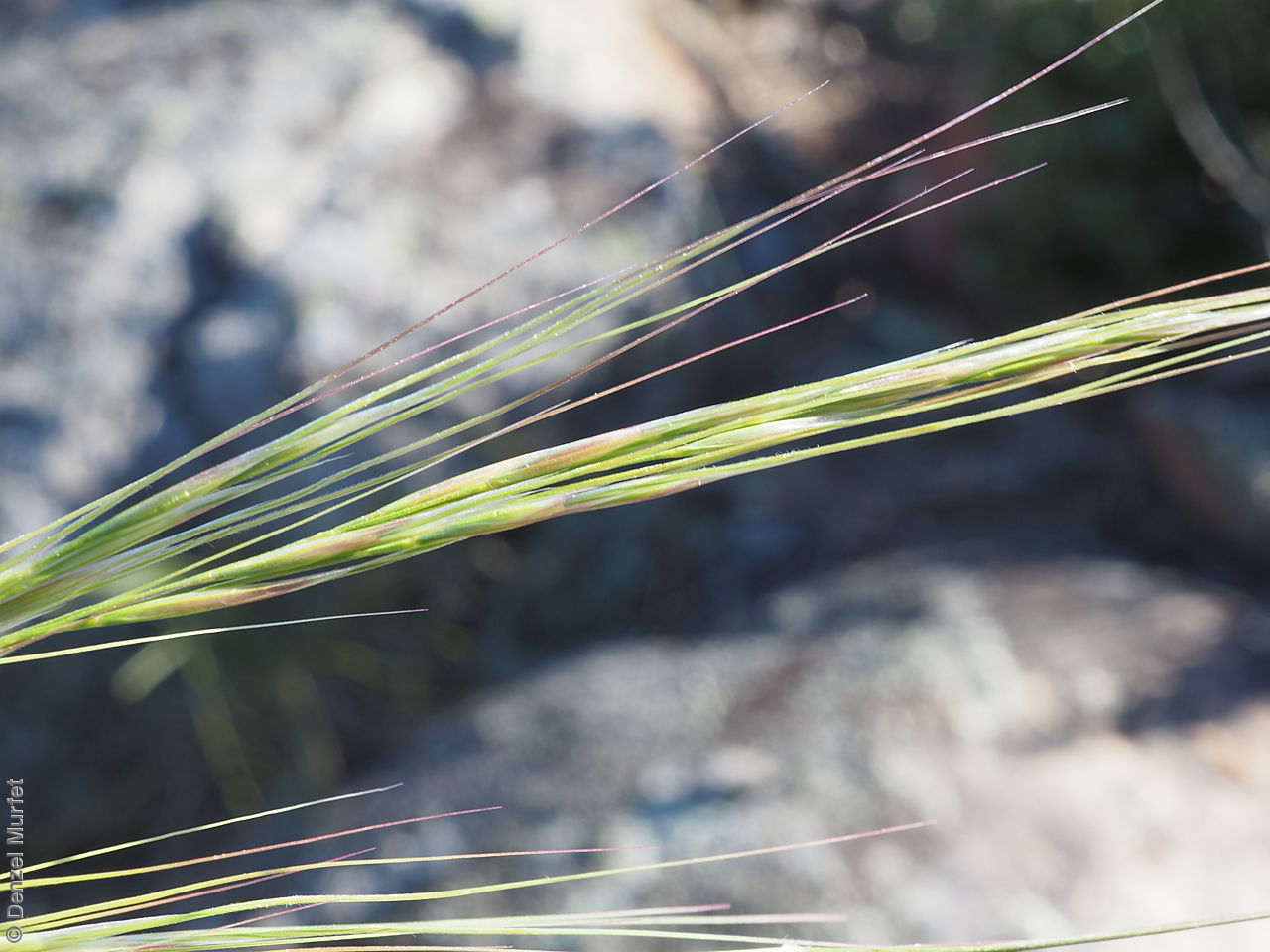
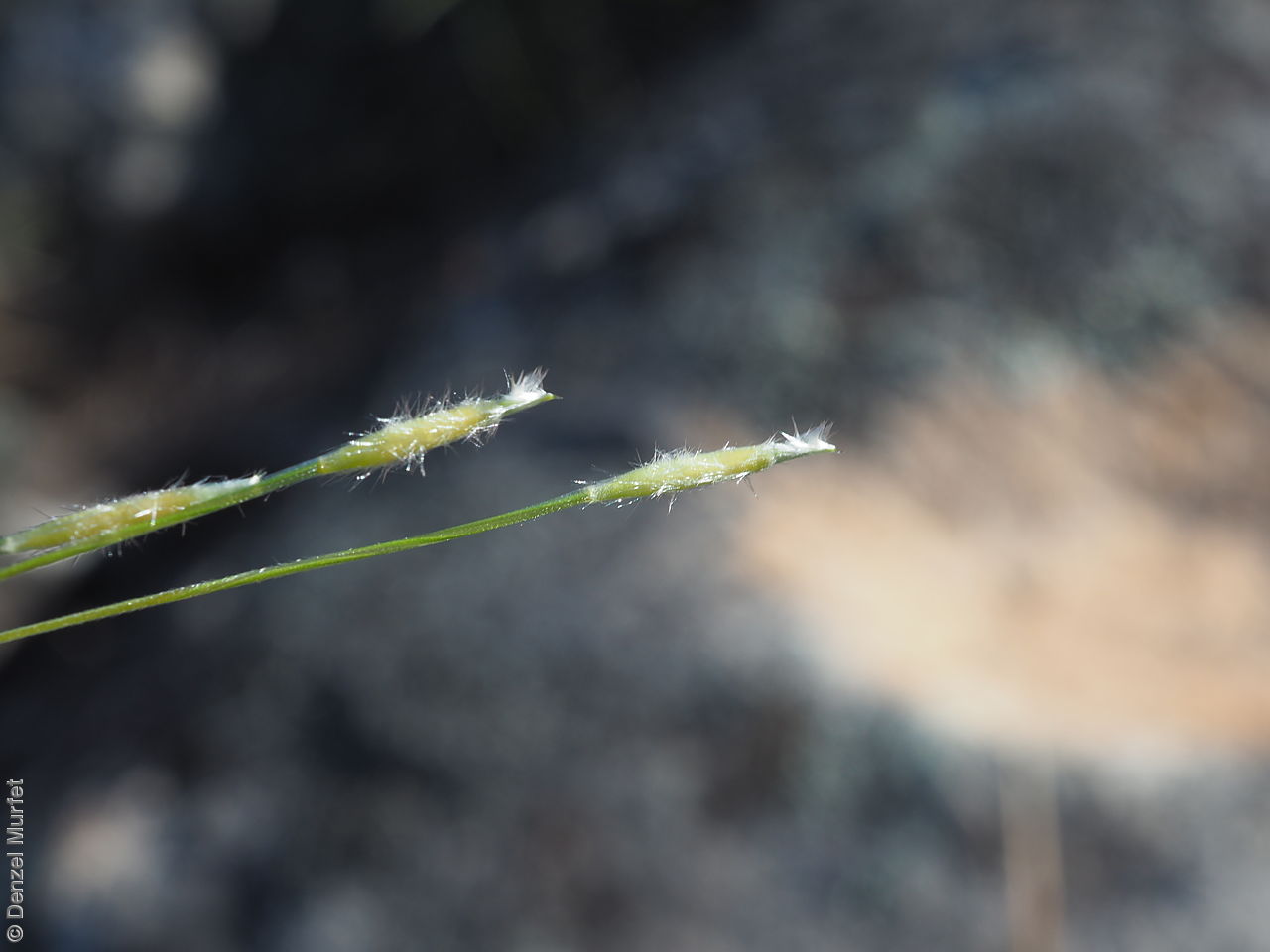
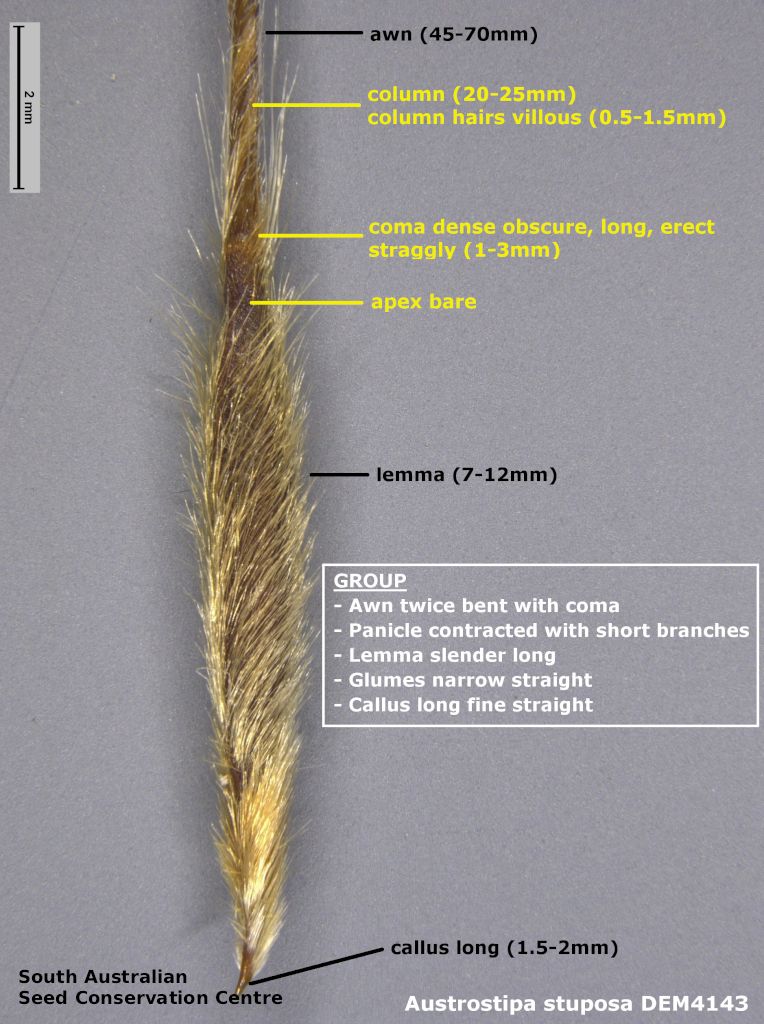
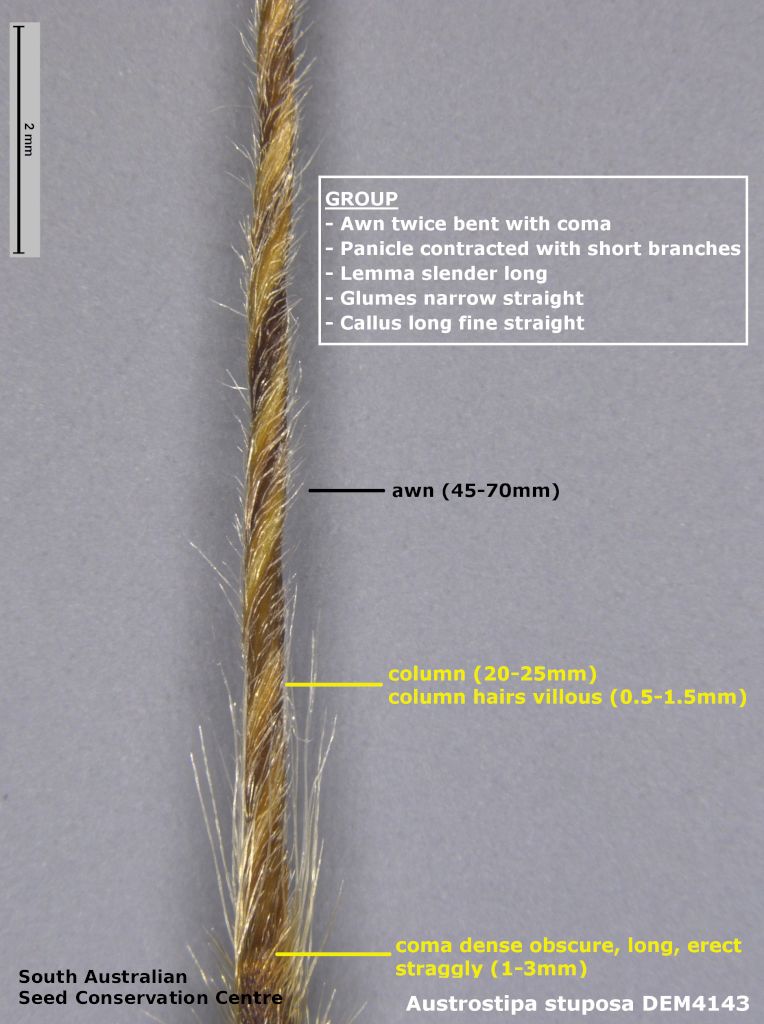
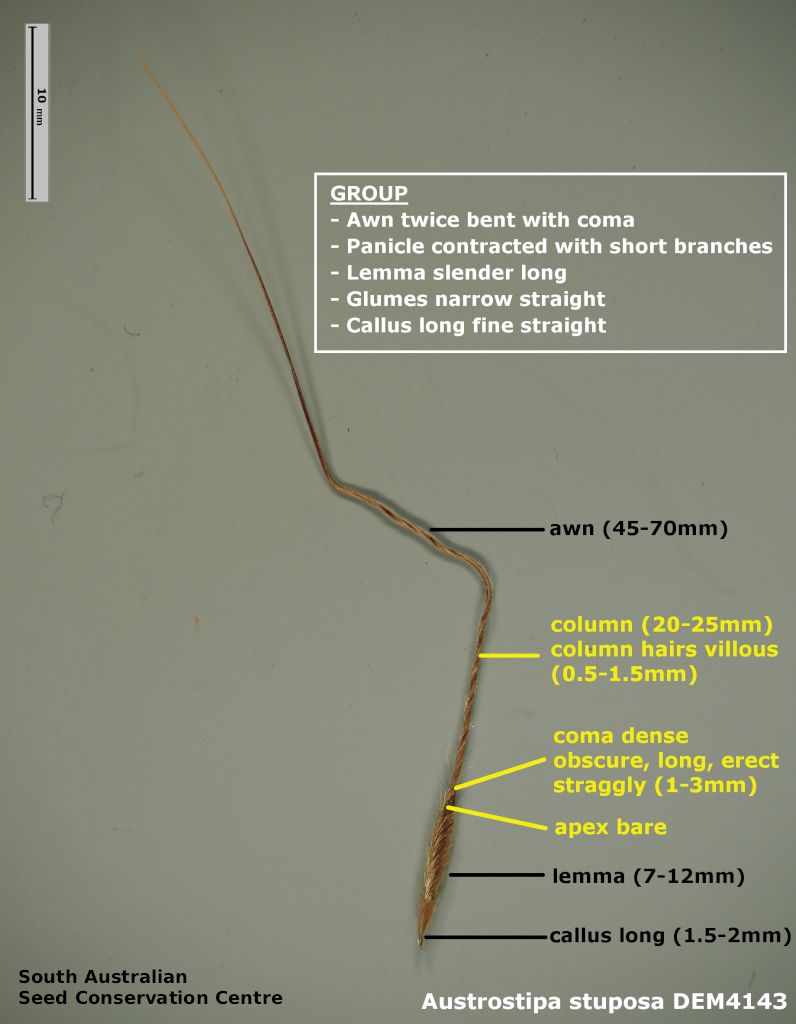

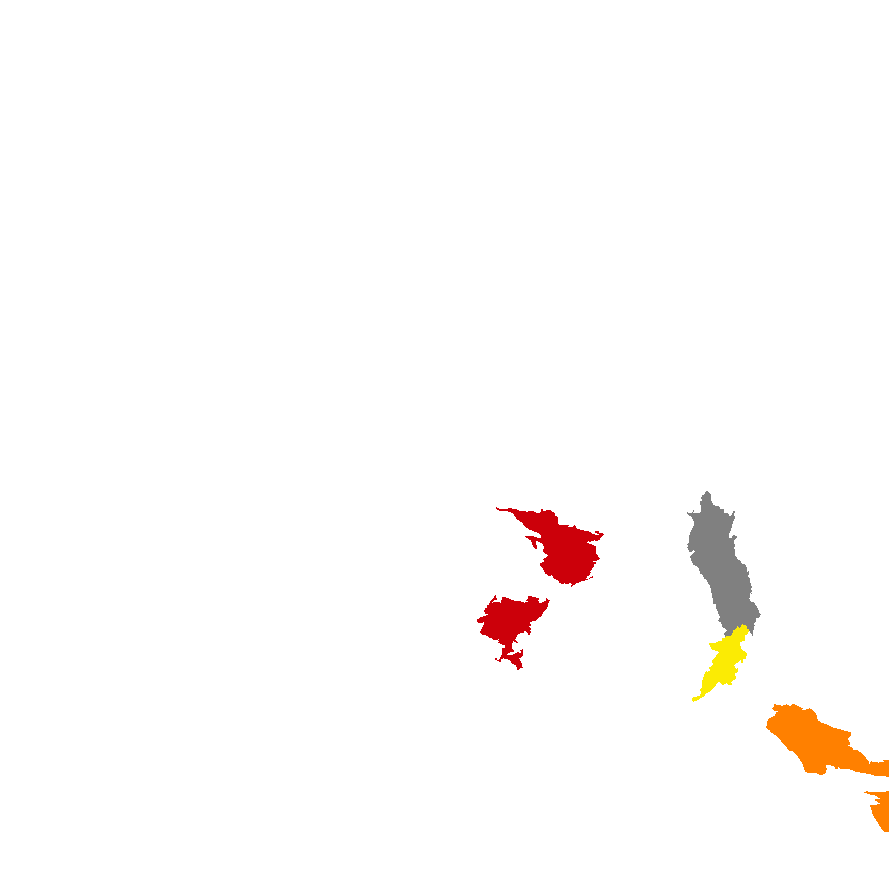
Prior names
Stipa stuposa
Etymology
Austrostipa from the Latin 'auster' meaning south and the genus Stipa, referring to the genus being allied to Stipa but restricted to Australia. Stuposa from the Latin 'stupa' meaning 'tow' (the fibre of hemp, flax or jute which has been prepared for spinning,; alluding to its leaf bases which breaks into fibres.
Distribution and status
Found on the southern Eyre Peninsula, the Northern Mount Lofty Ranges and the South-east in South Australia, growing in a wide range of soil types and habitats. Also found in New South Wales, Victoria and Tasmania. Native. Rare in South Australia. Common in the other states.
Herbarium regions: Eyre Peninsula, Northern Lofty, Southern Lofty, South Eastern
NRM regions: Adelaide and Mount Lofty Ranges, Eyre Peninsula, Northern and Yorke, South East
AVH map: SA distribution map (external link)
Plant description
Tufted perennial grass to 1.3 m high, with erect unbranched culms and pubescent nodes. Leaves smooth and glabrous, scabrous or pubescent with blade closely-inrolled or flat, to 40 cm long and 3 mm wide; sheath hirsute or pubescent. Inflorescence a contracted or sometimes expanded panicle to 35 cm, with purplish to straw-coloured pubescent glumes to 23 mm long with long fine tips, often broken, the lower 1-4 mm longer than upper. Flowering between September and November.
Key to this species: awn twice bent with coma; panicle contracted with short open branches; glumes narrow straight; callus long fine straight; lemma apex bare; coma long erect, weak straggly 2-3.5 mm and longer than lemma hairs; column hair villous 0.5-1.5 mm; rocky habitat. Fruits are brown linear-elliptic lemma to 12 mm long with a granular surface texture and covered in white to golden hairs except for a bare patch at the apex; coma long erect straggly and longer than the lemma hairs to 3.5 mm; callus long to 2 mm long; awn twice bent to 70 mm long with column to 25 mm long and column hairs villous to 1.5 mm long. Seeds are yellow-brown narrow ovoid grain to 6 mm long within the lemma. Seed embryo type is lateral.
Seed collection and propagation
Collect seeds between October and December. Use your hands to gently strip the seeds (lemma) off the mature fruiting spike, those that are turning golden colour. Mature seeds will come off easily compare to the immature seeds that remain on the spike. Alternatively, you can break off the whole fruit spike to allow some of the seeds to mature further. Place the seeds/spike in a tray and leave to dry for two weeks. No further cleaning is required if only seed collected. If seed spikes collected, use hand to strip off the mature seeds. Store the seeds with a desiccant such as dried silica beads or dry rice, in an air tight container in a cool and dry place. Viability of grass seeds could be very variable, depending on time of seed collections and seasonal conditions.